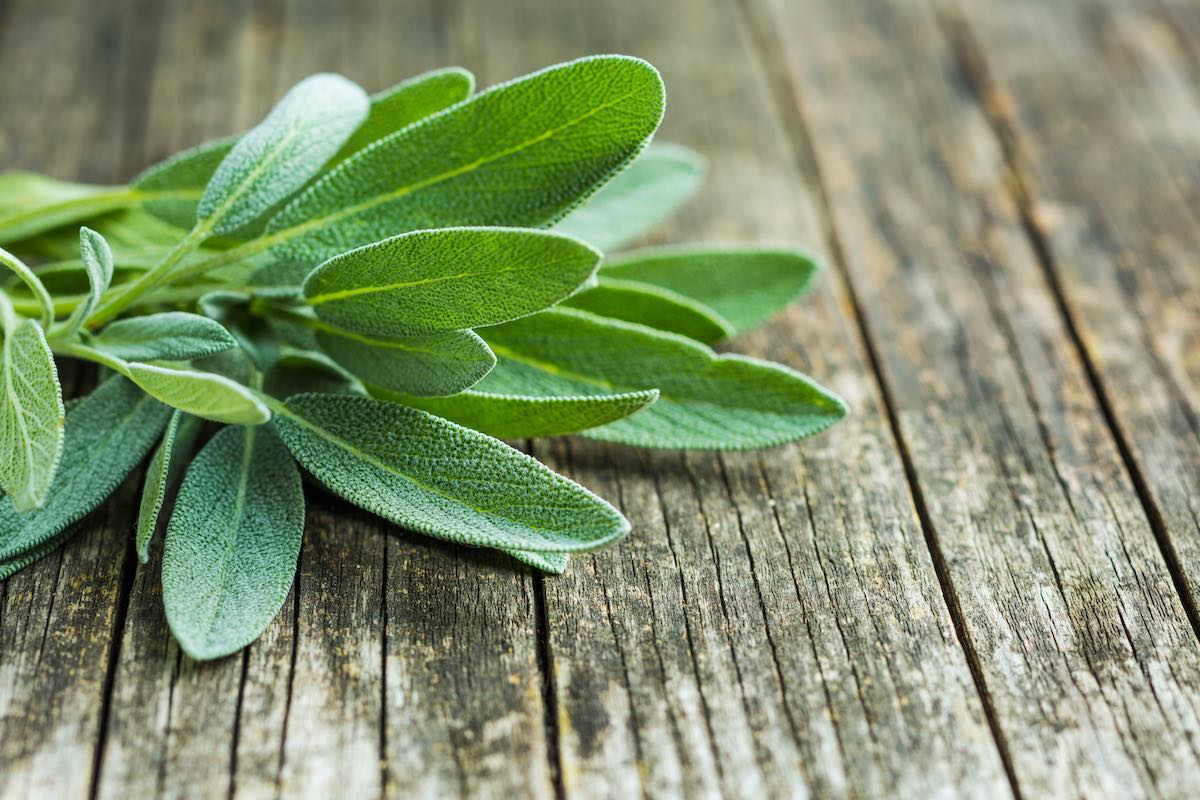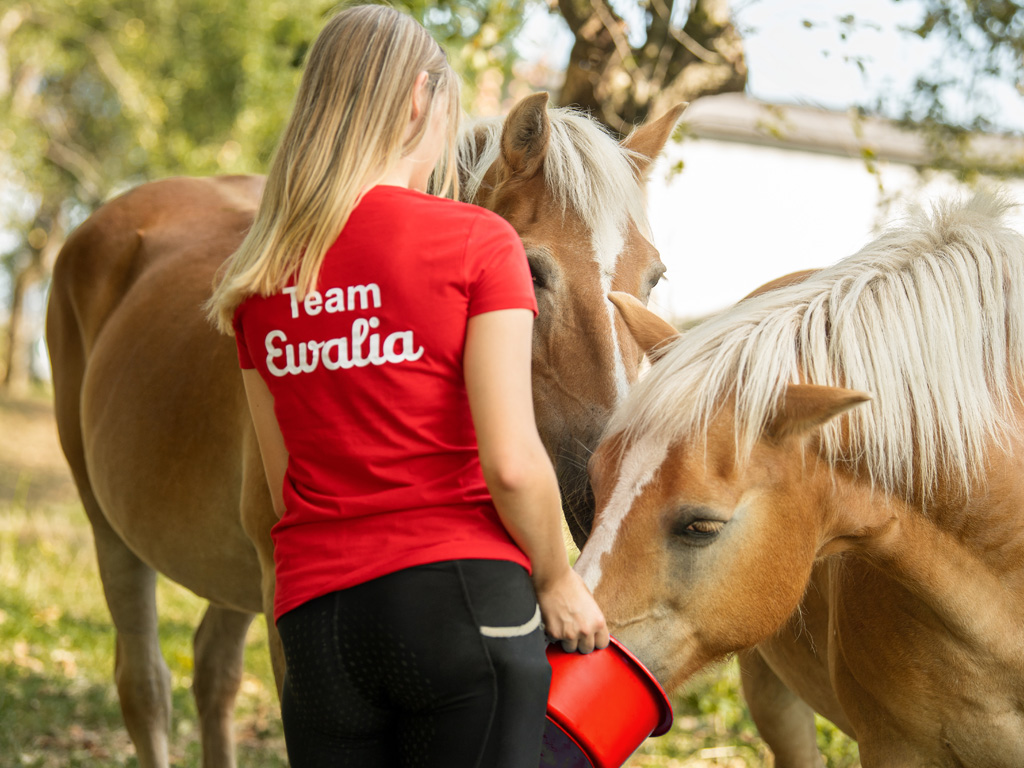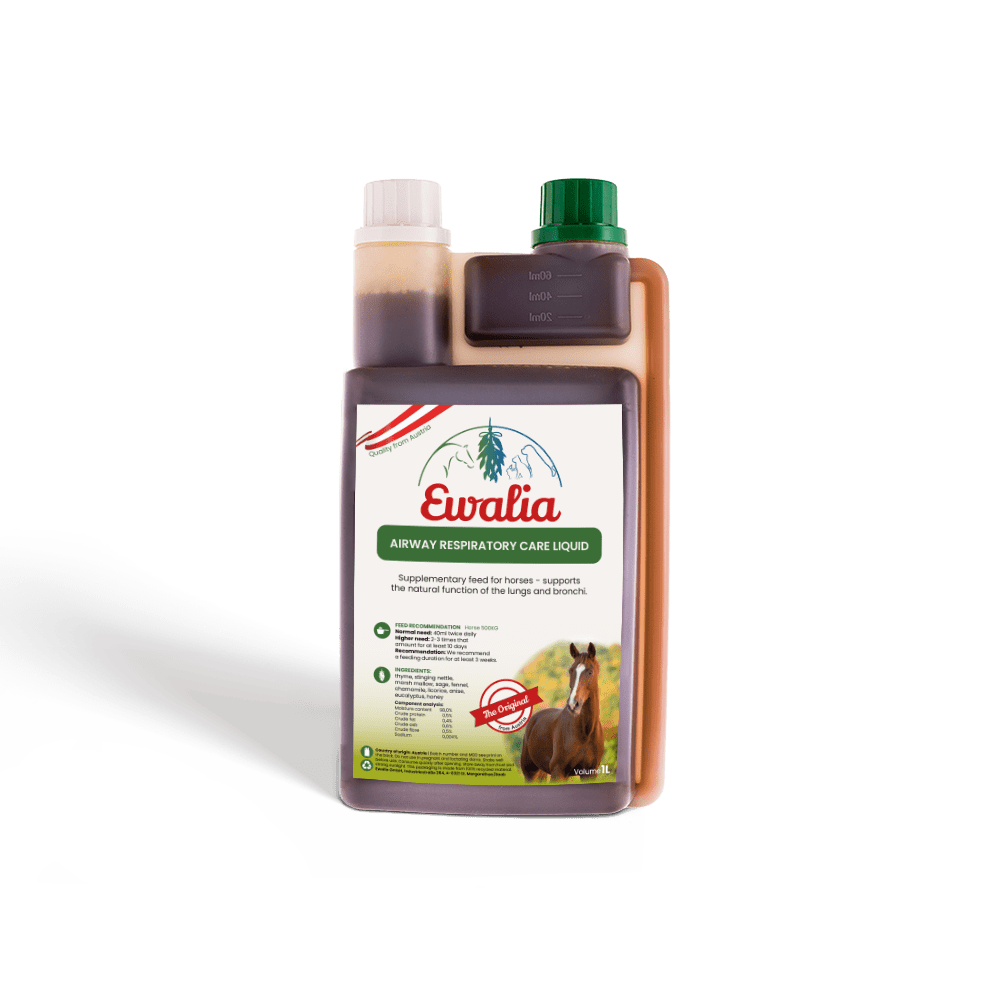Sage

Sage (Salvia officinalis) was viewed as a universal medicinal herb in earlier times. For horses, and dogs, the active ingredients of this native Mediterranean plant bring relief from ailments of the throat and pharynx.
Where does sage come from, and what does it look like?
Sage in its wild form is originally from the Mediterranean region. This warmth-loving, evergreen bush prefers arid, stony soils. In the Middle Ages it was brought over the Alps by monks, and today is cultivated all over the world.
The plant can grow to 80 cm in height, with branched stems that turn woody near the ground. Sage leaves are long and oval, with fine white hairs on their wrinkled surface. Older leaves will be bare. The leaves on the lower part of the stem have longer stalks than those higher up, giving the plant a very bushy appearance. Sage flowers in May and June. The blossoms are most often lavender but sometimes pink or white, and show the shape typical of Lamiaceae flowers. All parts of the plant emit a strong aromatic scent.
There are about 800 recognised sage species today, with true sage and especially clary sage (Salvia sclarea), also called Roman sage, being used as medicinal plants.
The fruits of Salvia hispanica, a variety from Mexico, have become popular world-wide as chia seeds. This newly rediscovered superfood contains high levels of omega-3 fatty acids, proteins, vitamins, antioxidants, and minerals.
What is sage used for?
Sage has a spicy, slightly bitter taste, and is used in cooking to make fatty foods more digestible. It is said that sage can also extend the storage life of fats so that they do not become rancid. Chewing on a sage leaf produces a "furry" feeling in the mouth caused by the astringent properties of the plant.
Sage's botanical name, Salvia, is derived from the Latin salvare, "to heal", pointing to its use as a healing herb. The high esteem in which it is held can be seen in the Medieval proverb, "Why should a man die whilst sage grows in his garden?" In folklore, sage was said to have a stimulating effect: for example, it was used in the flower decorations in churches – according to rumour so that churchgoers would not nod off during high mass. It is also prized by speakers and singers for keeping the voice supple. Added to wine, it helped to protect against fever in winter, and its smoke has a purifying effect and could drive out bad luck.
Sage has long been known as a herbal remedy for inflammations in the mouth and pharynx. Its leaves are harvest in May and June before the flowering season. Sage is used to make tea, mouthwash, and essential sage oil. It is also found in throat care products along with herbs like thyme, marsh-mallow, and aniseed.
What makes sage so effective?
Sage leaves contain high concentrations of tannins and bitter substances. The astringent properties of these substances protect the mucous membranes in the mouth and pharynx against bacteria and viruses, and accelerate the healing of small wounds. Sage's bitter substances and tannins also promote the secretion of digestive juices and help relieve minor digestive ailments.
The essential oil in sage contains thujone, camphor, and eucalyptol. The exact composition depends on the plant's location and the harvest time of its leaves – sage growing in partial shade will have higher a concentration of substances. Thujone is also found in thyme, rosemary and wormwood and has disinfectant, analgesic and antispasmodic effects when administered in the proper dosage. Camphor promotes blood circulation and has mucolytic effects, whilst eucalyptol frees the airways of mucous and is anti-inflammatory, antiviral and antibacterial.
The flavonoids in sage. especially rosmarinic acid and caffeic acid, are antioxidant and anti-inflammatory. Recent studies and tests have proven that rosmarinic acid has a regulating effect on blood sugar and can improve insulin sensitivity.
What equine and canine ailments can be treated with sage?
Sage is especially beneficial for dry coughs in horses and dogs. It can dislodge stubborn mucous and relieve pain in the throat.
Its bitter substances stimulate appetite and digestion. Sage tea can inhibit milk production in pregnant dogs.
Tip: Horses tolerate sage quite well, but dogs must first become accustomed to its strong taste. Sage preparations for dogs should be mixed in with the animal's food, gradually increasing the concentrations.
Caution: Thujone and camphor can be hazardous in high doses! Pure sage oil should therefore not be taken internally by horses or dogs. When applying externally, take care that the animal is not able to lick off the oil!
Do not exceed the manufacturer's recommended quantity!
Applied externally, sage has disinfectant and mucilagenous- properties. Poultices with sage infusions help with inflammations of the skin and mucous membranes, and sage wound rinses quickly heal minor injuries. Skin fungi can also be treated by dabbing the affected areas with sage tea. Broken sage leaves will help repel insect bites.
Sage is also helpful in oral care, as it inhibits bacterial infections and soothes gum inflammations.
Tip: A few sage leaves added to a hot inhaler solution will help to treat equine coughs.
Caution: Sage and sage oils may cause allergic reactions!
Quellen und weiterführende Literatur
- Aichberger, L., Graftschafter, M., Fritsch, F., Gansinger, D., Hagmüller, W., Hahn-Ramssl, I., . . . Stöger, E. (2012). Kräuter für Nutz- und Heimtiere. Wien: Eigenverlag Phytovet.
- Brendieck-Worm, C., & Melzig, M. F. (2018). Phytotherapie in der Tiermedizin. Stuttgart: Georg Thieme Verlag KG.
- Prentner, A. (2017). Heilpflanzen der traditionellen europäischen Medizin. Wirkung und Anwendung nach häufigen Indikationen. . Wien: Springer Verlag.

















